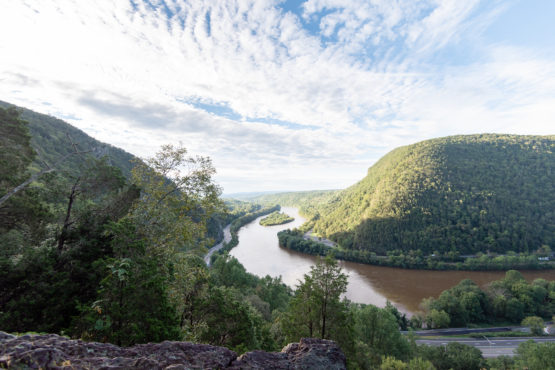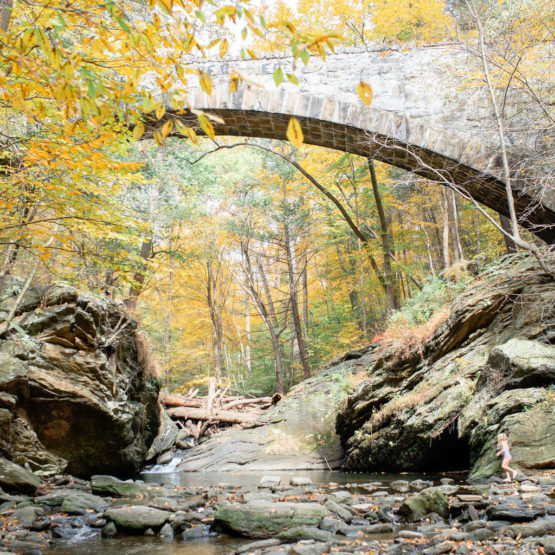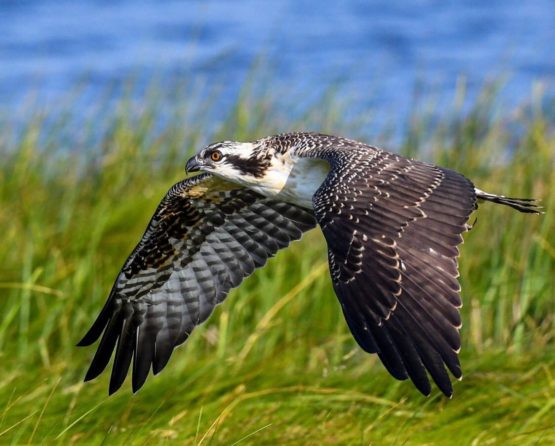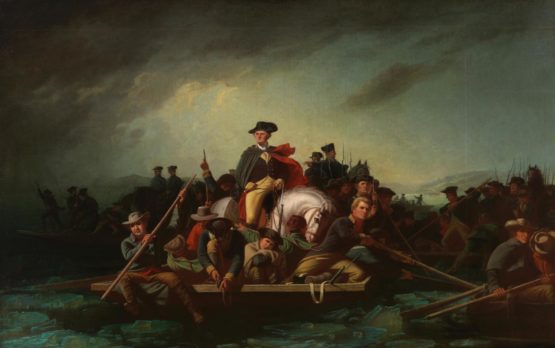
The Delaware River is a major U.S. waterway that touches five different states and provides drinking water to over 13 million people. It’s an essential part of everyday life for people, animals, and plant species. Even if you are familiar with the Delaware River, there are interesting facts and informational tidbits about its history, wildlife, and geography that may surprise you.
Learning about local waterways is one of the best ways to protect them, so read up on these Delaware River facts and educate yourself about this incredible natural resource.
Delaware River Facts: The Basics
Before getting into some of the more surprising information and statistics, let’s start with some essential facts about the Delaware River.
How Long is the Delaware River?
The Delaware River runs 330 miles long, which is slightly longer than the Hudson River (315 miles). In comparison, the Delaware River is also shorter than the Potomac River (405 miles), and the Susquehanna River (444 miles).
It flows through five U.S. states including Pennsylvania, New Jersey, New York, Maryland, and Delaware.
Where Does the Delaware River Start?
The Delaware River begins in two branches in the Catskill Mountains of New York. The Western Branch of the Delaware River starts near Mount Jefferson, while the Eastern Branch begins near Roxbury at Grand Gorge.
The two branches of the Delaware River merge in Hancock, New York and flow as one river down to the Delaware Bay.
How Deep is the Delaware River?
The deepest part of the Delaware River is 113 feet deep, and it can be found at Big Eddy in Narrowsburg, New York.
But the depth of the river varies depending on the location. Along the shorelines, river depth may be between 4-6 feet, but drop off steeply to an average of 30-40 feet away from the shore.
The main transportation port of the Delaware River—a 103-mile stretch from Philadelphia and Camden to the Delaware Bay—was part of a decades-long deepening project that changed the depth of the river from 40 feet to 45 feet. The project wrapped up in 2018 and was meant to make the shipping of cargo and oil and petroleum products easier between the Delaware ports. 
Delaware River Wildlife Facts
The Delaware River Watershed is home to a wide variety of wildlife species that depend on the Delaware River and its ecosystems to survive and thrive. Here are some interesting wildlife facts that you might not know.
The Delaware River is a hotspot for birds and fish. “The Delaware River Basin must be protected, as it provides habitat to over 400 types of birds, over 90 fish species, and many other animals,” says Carrie Barron, center manager for the John James Audubon Center in Audubon, PA.
Even traveling birds regularly utilize the resources of the Delaware River Basin. “The basin is in the Atlantic Flyway and provides habitat and food for 250+ species of migrating birds throughout the year,” says Damien Ruffner, center manager for the Discovery Center, located in Philadelphia, PA.

The Delaware River is home to endangered American Eels. Eels aren’t the first fish that comes to mind when thinking about the Delaware River, but according to Kimberly Estrada, a Delaware River Fellow at the Tulpehaking Nature Center, the river is home to one particular endangered eel species.
“American Eels are the only catadromous fish in North America,” says Estrada. “Catadromous means they spawn in saltwater and live their adult lives in freshwater.”
The eels—who mate in the North Atlantic’s Sargasso Sea—are able to thrive in the Delaware River because it is the longest undammed river located east of the Mississippi. The lack of dams makes it easy for eels to travel to the freshwater for living and then back downstream into the saltwater of the Atlantic Ocean to mate.
You might spot a river otter in Philadelphia along the Delaware. You might think otters are only on display at the Philadelphia Zoo, but these playful creatures can sometimes be found inside the city limits at the John Heinz National Wildlife Refuge.
“While they nest on the banks of the Delaware River, river otters hunt fish, mollusks, and aquatic invertebrates in the tidal marsh of the refuge,” says Wingyi Kung, visitor service specialist at this Philadelphia-based environmental education center that is America’s first urban wildlife refuge.
Shad still migrate the Delaware River in the spring. The Delaware River is known for its population of migrating shad during the spring months. The migration usually starts around April and lasts for approximately two months as these saltwater fish move to the freshwater of the Delaware to spawn. American shad may migrate 12,000 or more miles during an average life span.
Delaware River Historic Facts
The Delaware River plays a large part in the history of the states it touches and was a key location during the American Revolutionary War with George Washington’s famous crossing.
Here are some noteworthy historical facts about this important body of water.
George Washington crossed the Delaware River on December 25, 1776. As a General for the Continental Army, George Washington led troops across the icy river in order to attack Hessian troops near Trenton. The crossing happened at McConkey’s Ferry in Bucks County, Pennsylvania and solidified Washington’s role as a key leader.

The Delaware River was formerly called “Lenape Wihittuck.” Before Europeans arrived to the Delaware River Watershed, the area was home to Native American Lenape tribes. The tribe signed a peace treaty with William Penn in 1683, but Penn’s son Thomas tricked the tribes into giving away their land and the Lenape people were forced to move west.
Henry Hudson was the first European to discover the Delaware River. Hudson was part of the Dutch East India Trading Company and was not looking for the river when he found it in 1609. His discoveries allowed Dutch and Swedish settlers to flourish along the river.
The Delaware River has a connection to Napoleon. Joseph Bonaparte, the king of Spain and Naples and the brother of Napoleon was banished to the Bordentown, New Jersey neighborhood of Point Breeze.
“The area in Bordentown overlooked the junction of the Crosswicks and Thornton Creeks with the Delaware River,” says Estrada. “Bonaparte built his estate, eventually owning more than 1,800 acres.”
You can learn more about the history of the watershed and the present-day Delaware River by visiting one of the many environmental education centers located near this vital waterway; find a center today and start exploring.
